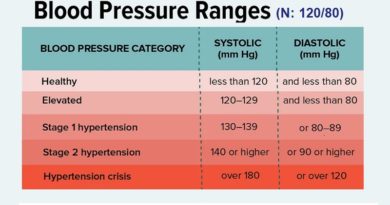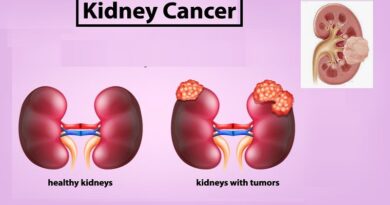Gallstones: Causes, Symptoms, and Treatment
One condition that affects the digestive system is gallstones. Our bodies are complex organisms, capable of performing numerous functions seamlessly. However, there are times when certain maladies disrupt the harmony one of which is this condition. In this article, we will explore gallstones, shedding light on their causes, symptoms, and available treatments. So, let’s dive in and unravel the mystery of gallstones!
Understanding Gallstones
1- What Are Gallstones?
They are solid deposits that form in the gallbladder, a small pear-shaped organ located beneath the liver. These deposits are primarily composed of cholesterol or bilirubin, a pigment found in bile. Gallstones can vary, ranging from as small as a grain of sand to as large as a golf ball.
2- Types
- Cholesterol Stones (Excess cholesterol in bile):
The most common type, accounting for about 80% of cases, consists mainly of cholesterol. Excess cholesterol in bile can lead to the formation of these stones. - Pigment Stones (more bilirubin):
These stones are formed when there is an excessive amount of bilirubin in the bile. Pigment stones are less common than cholesterol stones.
Causes
1. High Cholesterol Levels:
When the liver produces more cholesterol than the bile can dissolve, it forms cholesterol stones.
2. Excessive Bilirubin:
Certain medical conditions, such as liver cirrhosis or blood disorders, can cause increased production of bilirubin. This excess bilirubin can contribute to the formation of pigment stones.
3. Obesity and Diet:
Obesity is a known risk factor for gallstones. A high-fat diet, low in fiber, can trigger the development of gallstones. Rapid weight loss or crash diets can also increase the risk.
4. Hormonal Changes:
Women, especially those who are pregnant or taking hormonal contraceptives, have a higher risk of developing gallstones. Hormonal changes can affect the gallbladder’s ability to empty properly, leading to stone formation.
Signs and Symptoms
1- Silent Gallstones:
These silent conditions show no symptoms, causing no signs. They are typically discovered incidentally during medical imaging tests.
2- Gallstone Attacks:
When a gallstone blocks the bile duct, it leads to a sudden and intense pain known as biliary colic. The pain is in the upper abdomen, radiating to the back or shoulder. Other symptoms may include nausea, vomiting, and bloating.
Diagnosis and Treatment Options
1 Diagnosis:
Diagnosis can be done through several procedures and tests, including ultrasound, CT scan, MRI, or a cholescintigraphy (HIDA scan) to evaluate the function of the gallbladder.
- Medical History:
The doctor will ask about your symptoms, such as abdominal pain (biliary colic), nausea, or vomiting. They will inquire about your, family history, and any risk factors associated with gallstones. - Physical Examination:
To check for signs of gallbladder inflammation or tenderness in the abdomen. - Imaging Tests:
Imaging tests are commonly used to diagnose gallstones. These include:- Ultrasound: It is non-invasive and commonly used to visualize the gallbladder and gallstones.
- CT Scan: A computed tomography (CT) scan can provide detailed images of the gallbladder and surrounding structures.
- Blood Tests:
Blood tests for the overall function of the liver and assess for any complications. Elevated levels of certain enzymes or bilirubin can indicate gallstone-related issues. - Additional Tests:
In some cases, additional tests may be required to further evaluate gallbladder function and the extent of gallstone-related complications. These may include:- HIDA Scan: A hepatobiliary iminodiacetic acid (HIDA) scan is a nuclear medicine test that evaluates the functioning of the gallbladder and bile ducts.
- Endoscopic Retrograde Cholangiopancreatography (ERCP): ERCP combines endoscopy and X-rays to examine the bile ducts and potentially remove gallstones.
2 Treatment:
a) Watchful Waiting:
Asymptomatic cases may not require immediate treatment. Regular monitoring and adopting a healthy lifestyle can be sufficient.
b) Medications:
Certain medications, such as bile acid pills, can be prescribed to help dissolve cholesterol gallstones. However, this process is generally slow and may take several years for complete dissolution, if it occurs at all. These medications work by gradually breaking down the cholesterol in the gallstones, allowing them to dissolve over time.
c) Surgical Intervention:
Laparoscopic cholecystectomy, the removal of the gallbladder, is the most common surgical procedure performed to treat symptomatic gallstones. It is a safe and effective method, usually resulting in the complete resolution of symptoms.
Preventing Gallstones: Lifestyle Modifications for a Healthy Gallbladder
1- Balanced Diet:
Maintaining a healthy weight and following a balanced diet low in fat and cholesterol can reduce the risk of gallstone formation.
2- Regular Physical Activity:
Engaging in regular physical activity, such as walking, jogging, or swimming, can help prevent gallstones by promoting weight management and improving overall digestion.
3- Gradual Weight Loss:
If weight loss is necessary, then do it gradually and avoid crash diets, as rapid weight loss can increase the risk of gallstone formation.
Summary
Gallstones may be tiny troublemakers, but their impact on our well-being can be significant. Understanding their causes, recognizing the symptoms, and seeking appropriate treatment can help manage this condition effectively. By adopting a healthy lifestyle, we can reduce the risk of gallstone formation.
If you suspect that you may have symptoms, Helalmedical can help, offering quick, private, and convenient testing options. You may contact us here: Facebook page.




